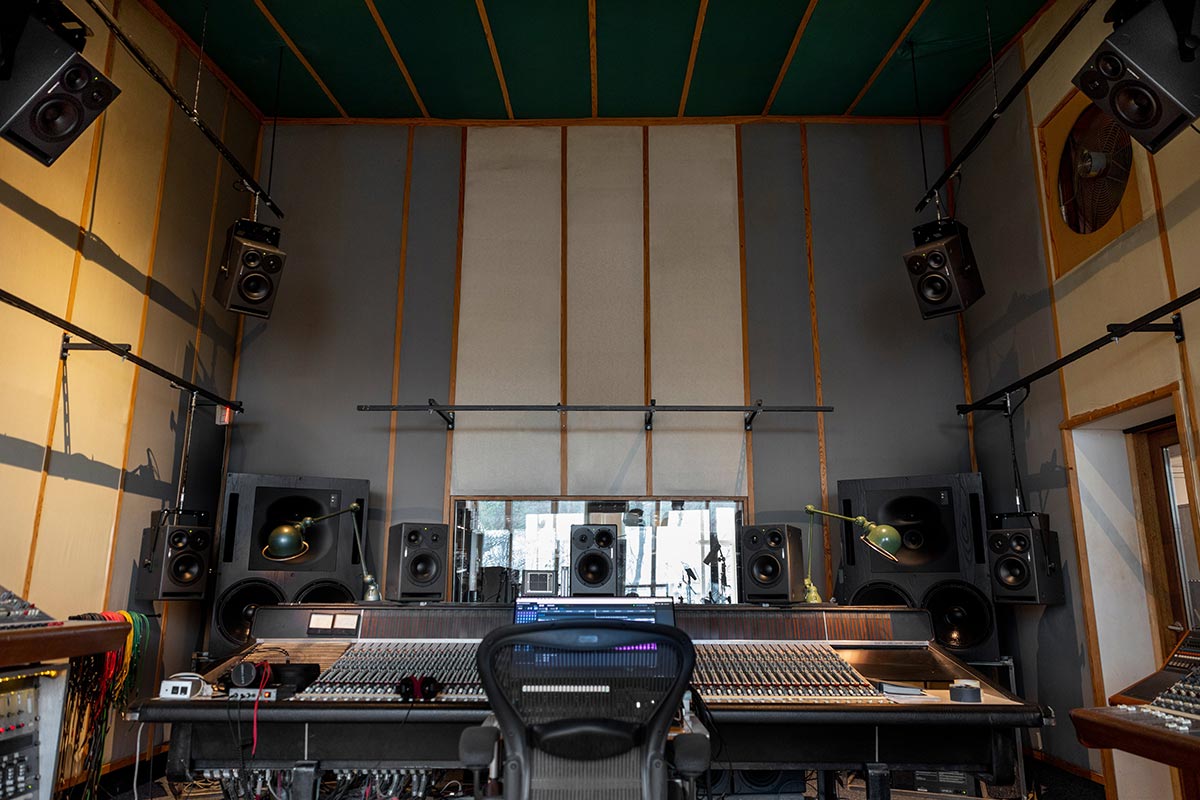
Images courtesy of: Henrik Kastenskov
Dynaudio pays a visit to Copenhagen’s Black Tornado Studio to experience their new Dolby Atmos setup
Danish studio Black Tornado has been operating since 1998, and whilst the studio made the move to Pro Tools and digital recording several moons ago, a central element of the facility is still its analogue classics.
Centered around an SSL console, the studio features an enviable collection of outboard from the likes of Fairchild, UREI, Tube-Tech and Manley, and legendary mics from Neumann and Telefunken.
Black Tornado’s fondness for the warmth and character imparted by analogue equipment hasn’t changed much over the years – the variety of formats that they’re required to cater for however, is a different matter. Whilst stereo will likely remain the defacto output of choice for some applications, the shadow of Dolby Atmos looms large, with studios the world over increasingly required to deliver mixes in immersive audio formats.
Responding to the changing needs of the music industry, Black Tornado have expanded its speaker configuration to 9.1.6 with 15 Dynaudio Core 47 speakers and two Core Subs, a transition made easier due to the expertise of Dolby engineer Richard Addis, who also conducted the calibration.
Dynaudio travelled east to Copenhagen for a catch up with audio engineer (and Black Tornado founder) Lars Lundholm, as well as Sound Designer and Atmos specialist Christopher Gjørup, to find out more about making the switch into an immersive audio recording and mixing space.
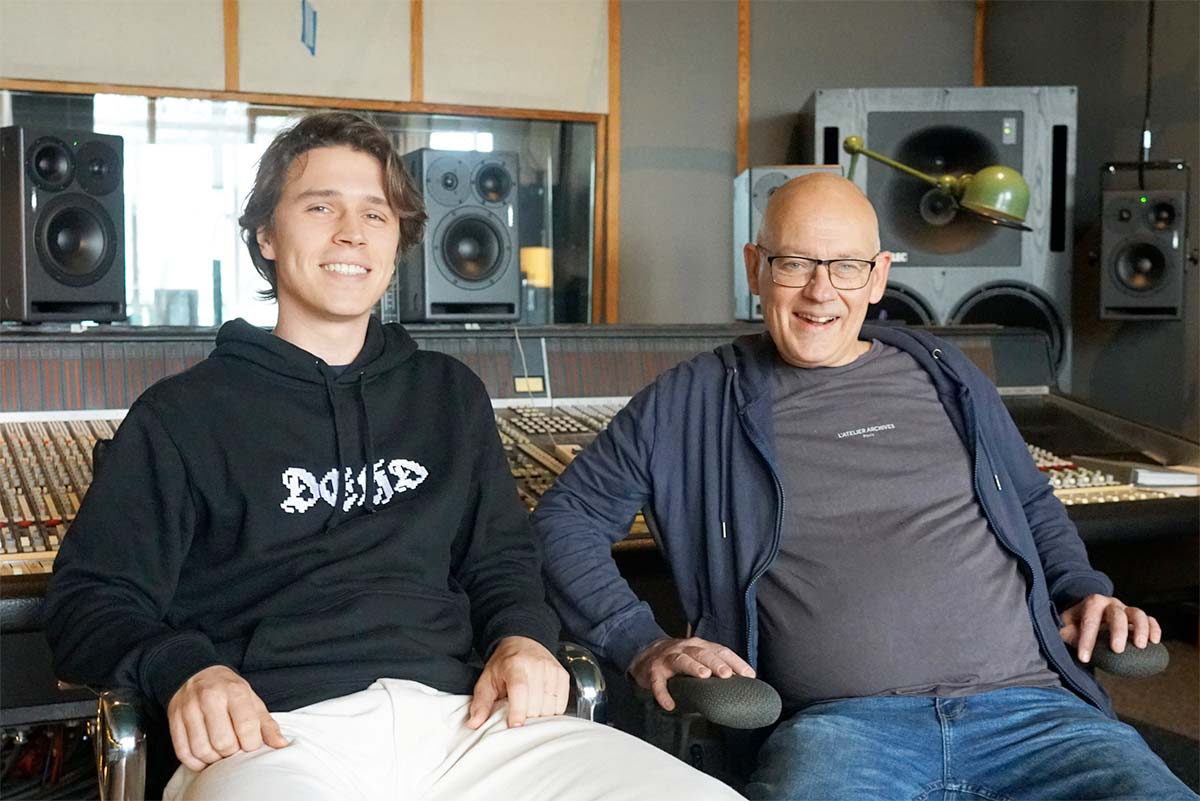 The speaker system configuration
The speaker system configuration
While the most commonly seen speaker configuration for Dolby Atmos is 7.1.4, Black Tornado has gone for 9.1.6, mainly due to the large size of their control room. Using the full length of the room allowed for an extension of the system – as recommended by Dolby engineer Richard Addis.
All 15 of the studio’s monitors are three-way Dynaudio Core 47s, which ensures consistent sound reproduction from all sides and above, with the LFE channel handled by two Core Subs.
And whilst Christopher (Gjørup) has worked in some smaller Dolby Atmos 7.1.4 certified rooms, he’s found the size of the room can really make a significant difference: “When working in a smaller 7.1.4 Dolby Atmos room, it still sounds great, but the feel is more like wearing a pair of huge headphones if that makes sense. Whereas this room sounds much bigger in a natural way – as if it’s the room itself that plays rather than very large, extended headphones.”
The decision to go with Dynaudio’s Core speakers was an easy one for the studio. Long-time Dynaudio users, Black Tornado had already been using Dynaudio BM15As as nearfields for over 15 years.
“One of the benefits of having the same three-way speakers at every position is the sonic consistency from all sides and heights,” Christopher says, adding that Core 47 covers a lot of ground in the frequency spectrum. This would become abundantly clear when Richard Addis calibrated the room.
“He applied Bass Management to every single speaker in the setup,” Chris continues. “But the crossover points used for the subs and the LFE channel was usually set very low – often as low as 30-35Hz – as the Core 47 monitors are perfectly capable of handling low frequencies with great precision and within the SPL-tolerances for Dolby Atmos.”
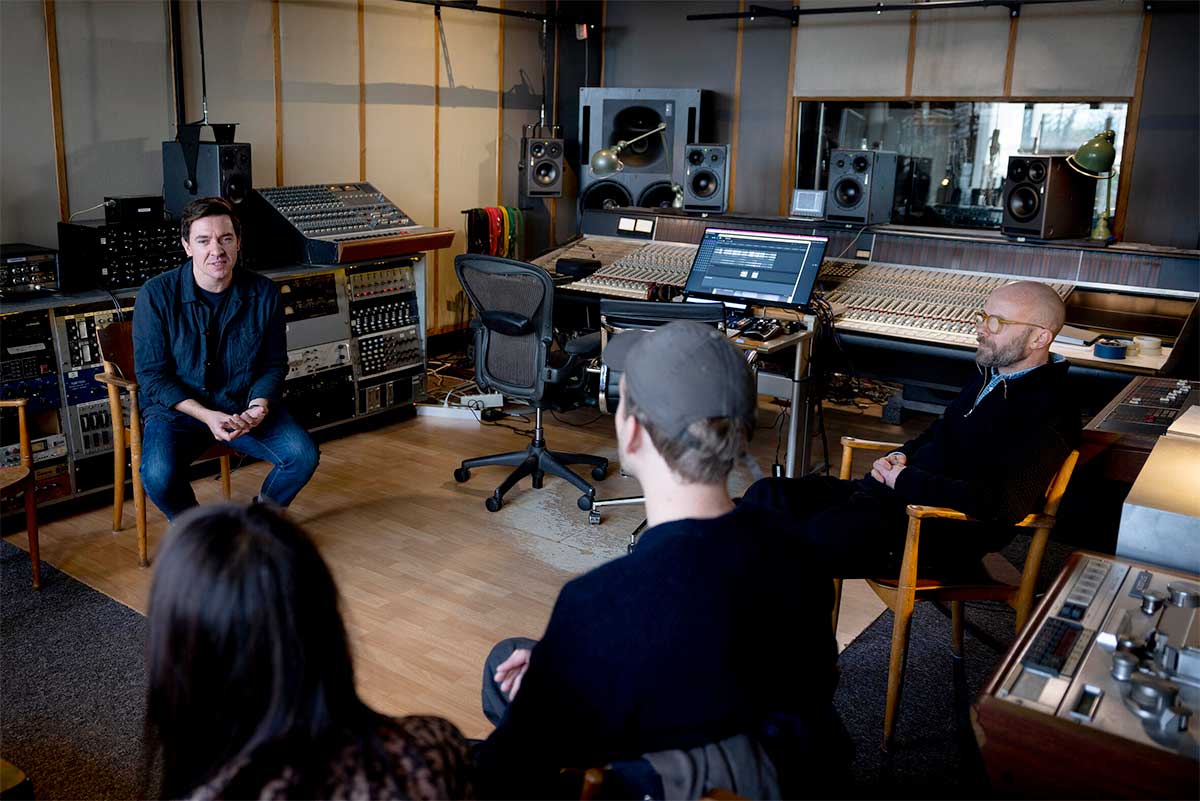
Service Engineer from Dolby Europe, Richard Addis (left), introduces Black Tornado’s new Dolby Atmos facility to a small audience during the launch event in Copenhagen. He is accompanied by Mastering Engineer Dyre Gormsen (right).
“But for us, having that super-wide sweet-spot – which allows all of the band members to listen to takes in immersive at the same time during tracking sessions – is simply invaluable.”
Lars Lundholm, Black Tornado founder
Extended sweet-spot
The extra ‘leg’ the studio has incoporated with its 9.1.6 setup allows for an extended sweet-spot, a point emphasised by Lars Lundholm: “We immediately found that the immersive sweet-spot was quite large. It’s not just an area exactly at the engineer’s chair at the exact centre of the console, it’s a whole area in front of our SSL desk. We could fit an entire band in that space, which makes perfectly good sense, as that is exactly the types of sessions and productions we very often do.”
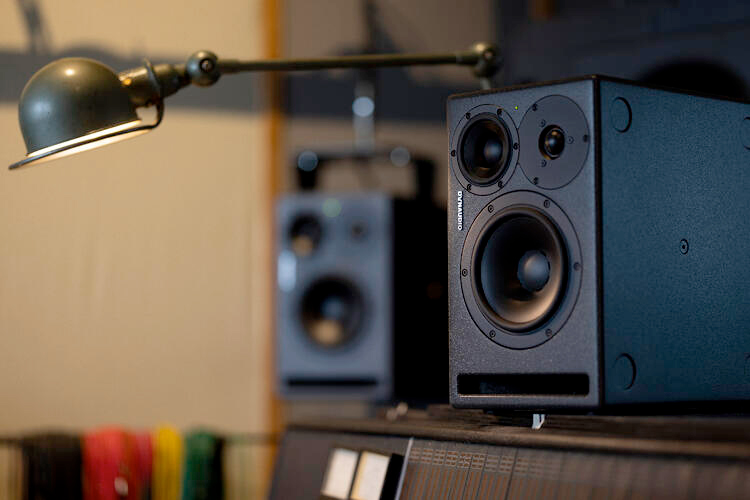
“When I started researching the options, I visited a number of 7.1.4 Dolby Atmos studios in London,” he continues. “And in every case, the physical rooms were much smaller than ours – which usually translated into a fairly narrow sweet-spot. That often isn’t a problem if you work with postproduction or upmixing pre-recorded sessions from stereo to immersive, in which case it’s often just a single engineer working in the room.
“But for us, having that super-wide sweet-spot – which allows all of the band members to listen to takes in immersive at the same time during tracking sessions – is simply invaluable.”
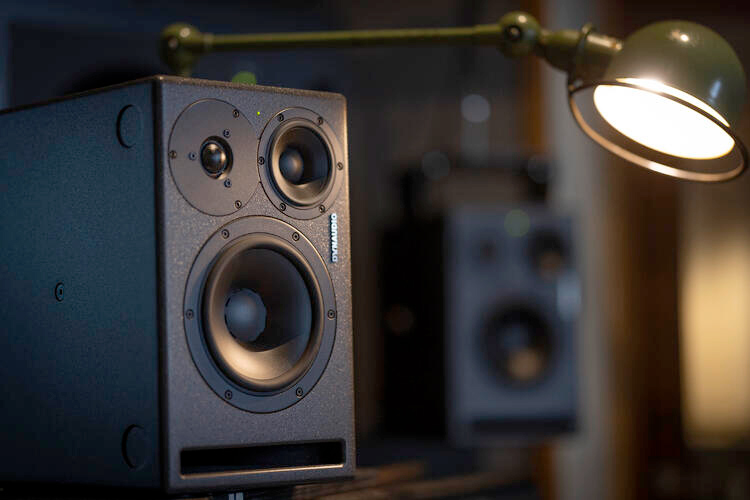
Audio pioneering
We truly are in a transitional phase where existing music libraries are being gradually transformed into immersive audio, and most new recordings are released in stereo as well as immersive. But how are audio engineers and producers coping with this rapid change of technological pace?
Lars is a seasoned engineer but remains curious, and he recognises the need to adapt to the new reality at Black Tornado as they move ahead. Christopher, on the other hand, has recently graduated as an audio engineer and sound designer – but he has already had plenty of hands-on immersive audio experience during from his training at the Sonic College audio-engineering school, which boasts three immersive studios, and an immersive cinema.
The main difference between these two ‘generations’ of engineers is probably that Christopher is almost to be considered an immersive native. Obviously, he has worked with stereo first, but fewer practical habits and conventional wisdoms had crystallised before the immersive world emerged.
“I didn’t feel that I was entirely locked to stereo when I first got the chance to try mixing in immersive at Sonic College,” Christopher says. “And since we haven’t yet arrived at a general consensus on how immersive music should sound, it’s kind of a pioneering phase where a lot of experimentation is happening in studios all over the world. It’s very exciting to say the least!
“So, to me, one of the most important things to do in the process is simply to listen to and get inspired by as many immersive mixes done by others as I possibly can – remaining open to new ideas and takes on how immersive audio can be utilised in a meaningful way.”
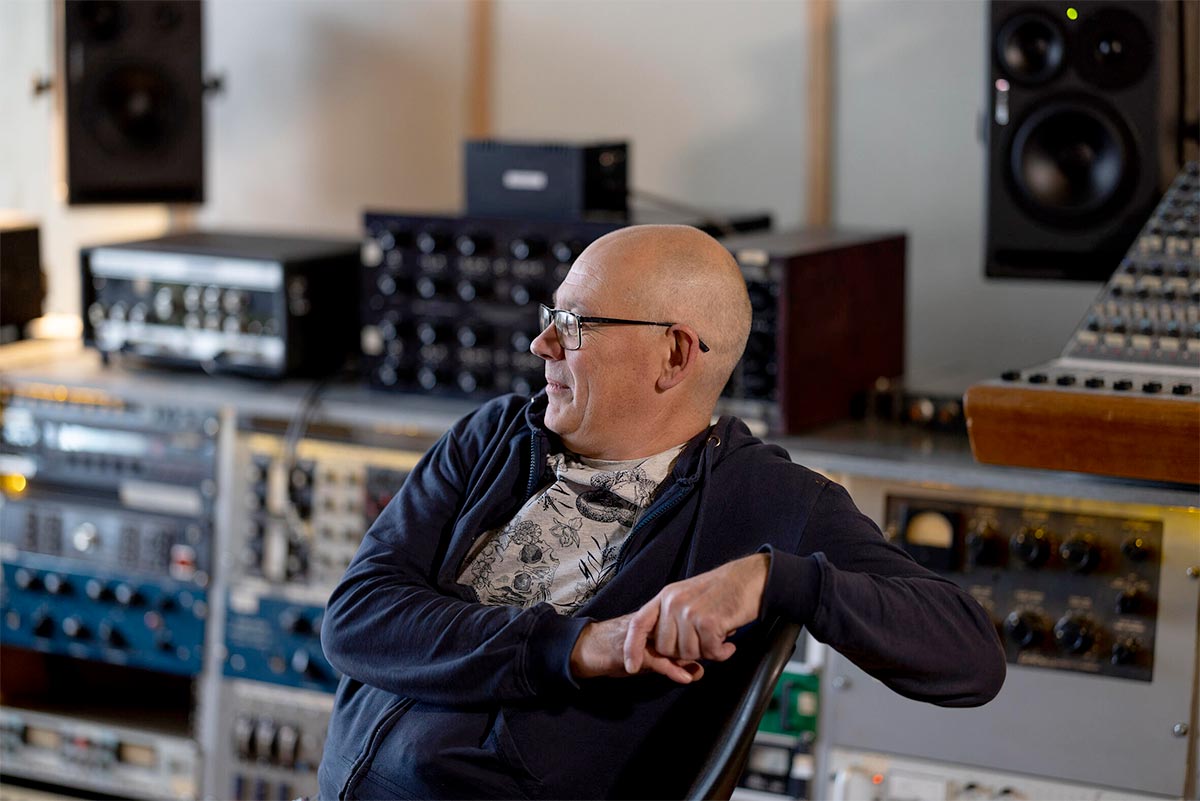
Black Tornado founder Lars Lundholm taking a minute in the studio’s cavernous control room.
Future applications
Experimentation has always been a hallmark of music production. Think back to when stereo was first introduced: curious, cutting-edge artists like The Beatles, Jimi Hendrix and The Beach Boys were all over it.
And, not surprisingly, some of those very first explorations sometimes tend to overshoot a bit – panning instruments hard left or right, for example, and completely removing them from the middle of the soundstage. But over the years, a more sensible consensus on stereo sound was reached, using the format as a way to widen the listening experience rather than making it extreme and experimental.
Something similar is sure to happen with immersive. We’ve already heard the first experimental mixes, where all of the possibilities are explored – with guitar solos flying around and above in the sonic space. But over time, we’ll likely see immersive audio more as an expansion of the sound rather than an opportunity to create wild, object-based movements. Christopher does point out, though, that he has heard some successful object-based sequences – particularly in electronic music productions.
He also mentions one other application that may become a great way to bring the format, in its purest form, to a wider audience: “There already are many Dolby Atmos-certified cinemas out there, and I recently experienced a Rammstein concert in a Dolby Atmos cinema in London on the day they released a new album. I guess that in the same way you can watch movies with a Dolby Atmos soundbar at home, it isn’t comparable to the experience you get when watching it in a theatre where you have a ton of physical speakers in a finely tuned, acoustically treated and perfectly calibrated listening space”.
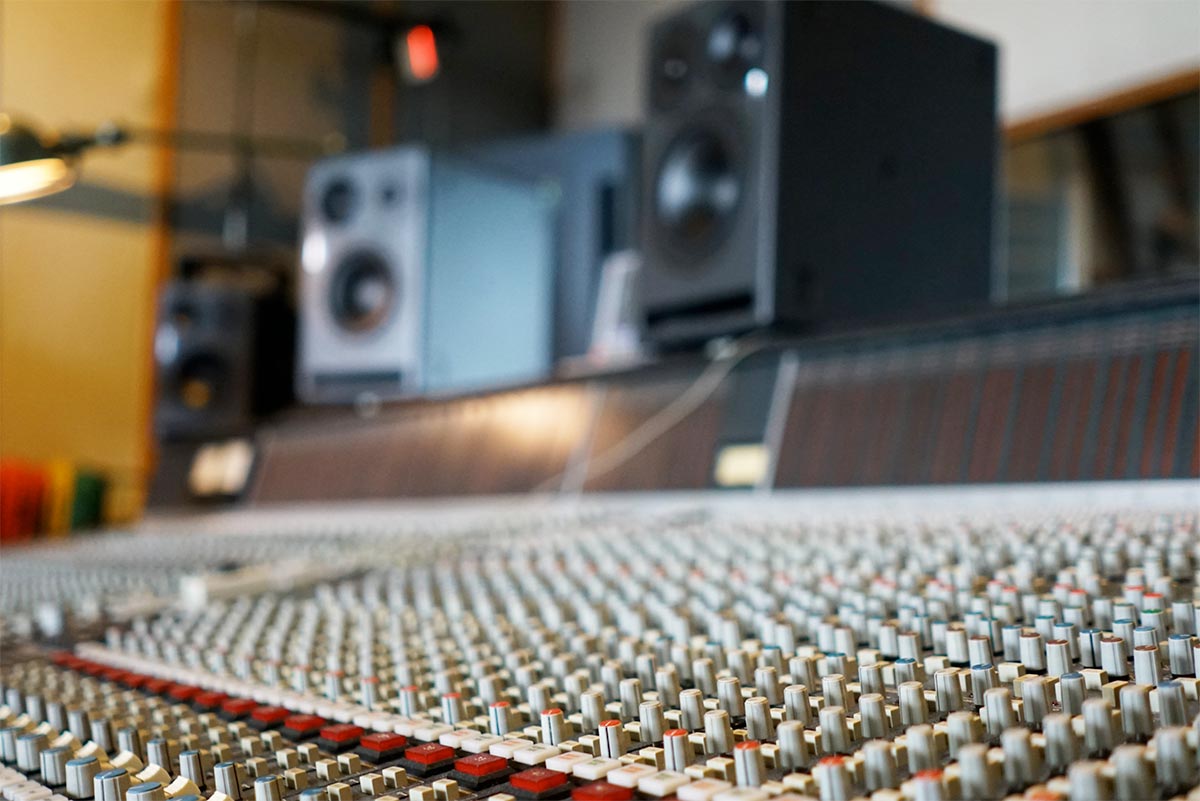
The studio’s SSL 4000 Series console
Fold-down to stereo
Until immersive becomes the one format, like stereo was for decades, fold-down probably has to be considered for some time when mixing in immersive. However, according to Lars and Christopher, this shouldn’t be a problem. They’ve been impressed with how good immersive mixes sound when they are folded down to stereo playback. They point out that these were, in most cases, created with an eye on expanding the sonic field rather than being overly creative with object-based stems flying around. But, they add, at least in those cases, we’re already there – fold-down to stereo is just a click away and it sounds great.
As long as immersive mixes are being done with stereo in mind, there’s no need to create additional, dedicated stereo mixes. The focus can be on mixing in immersive and then a simple fold-down will often work out beautifully afterwards.
Immersive sound is still relatively new. So, while Lars, Christopher and the team have done a lot of research and have some immersive experience, this particular Black Tornado room has yet to be pushed to its limits.
As such, Dynaudio have already agreed to meet up again with Black Tornado again once they’ve had a chance to host and finalise a number of Dolby Atmos productions with their new setup.
We’ll be sure to keep you updated on how the immersive journey at Black Tornado plays out in the coming years. Stay tuned…
This article originally appeared on Dynaudio.com
Additional Links:
See the full range of Dynaudio Core Series Monitors
To find out where to buy Dynaudio studio monitors in the UK, visit our Dynaudio UK Dealers page.
![]()
Dynaudio is world-famous for making hand-crafted high-end loudspeakers for living rooms, home cinemas, cars and professional recording studios.
Since the beginning in 1977, the company has made iconic products rooted in a love of music and film – reproducing exactly what the artist intended. Nothing more, nothing less.



















